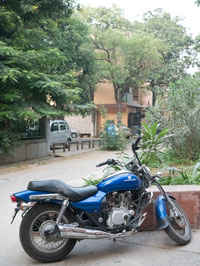The Panasonic Lumix GX7 is a mirrorless camera with a 16 megapixel Micro Four Thirds sensor, which may not sound very impressive, but what it does have is a number of really great tweaks and features. The camera is designed with serious enthusiasts in mind, yet, is simple enough for even an amateur to pick up and shoot with. It has great image quality, good video, but there are areas where it tends to falter.
The construction of the GX7 is part plastic and part metal, but it’s rather difficult to tell where one ends and the other begins. The front gets taken up mostly by the generous rubber grip, which is better than what we’ve seen in most mirrorless cameras. The rest of the front gets taken up mostly by whatever lens you may attach to the camera, leaving just a finger’s breadth worth of space on the extreme left, where the lens release button sits.
The top of the camera houses a dial, inside which sits the shutter button. Next to this is the mode dial and under the mode dial is a physical on/off switch that goes right to left. We actually really like this little lever for turning the camera on and off as this means we don’t have to deal with any accidental instances of the camera coming to life, which can happen when you have the tradition press-button. The other really intuitive thing Panasonic has done is that it has included a proper dial around the shutter button, where you’d normally find a zoom toggle (in point and shoot cameras) or a power toggle (in DSLRs). The placement is so convenient that the finger naturally reaches for it anytime we need to change any setting, which is excellent if you’re trying to shave even the tiniest of milliseconds in your shooting.
A clutter-free top with minimal, but very useful set of dials and buttons
The back of the camera is adorned with the important stuff, a four way button configuration (which is not a dial) along with five buttons around it. Three of these are Fn buttons which can have various functions mapped to them, bringing the convenience of access right to your fingertips. The other is for playback and the fifth toggles between various display modes (LCD, Viewfinder only, Eye sensor). At the top of the back panel is a very neat little toggle switch that allows you to switch between AF and MF with a button in the middle to lock AF. Lastly, towards the center (placed under the hotshoe) is a Fn 4 button that engages the viewfinder and a switch to pop up the flash. The buttons on the LX7 are many in number and are just a little smaller than we’d like them to be, but they’re still easily accessible and spaced well apart so you don’t accidentally hit the wrong button.
The back is neatly arranged with enough space between buttons to prevent accidental presses
The one serious issue we have with the LX7’s ergonomics happens to be one of the things we like about it the most; the Viewfinder. The Viewfinder on the LX7 is capable of tilting upwards by 90 degrees for easy composition (which is actually really helpful when making awkward compositions). Unfortunately, what this means is that the hinge mechanism of the EVF causes it to stick out of the top, almost by one fourth of an inch. If you like to hang the camera off your shoulder as you move around, you will often notice the viewfinder rub up against your side, and occasionally even just flip upwards from the contact. It won’t break or anything from this wiggling around, but it can be somewhat annoying.
The viewfinder tilts up, sitting as tall as the pop-up flash
Features:
The Panasonic Lumix GX7 is built on the DNA of its predecessor, but also accounts for the modern day features being offered by the competitors. For starters, the GX7 is equipped with a 16 megapixels micro four thirds sensor, which is made in house by the company. While the sensor is pretty standard, what’s unique to the GX7 is that the camera actually employs in-body image stabilization, a rather rare feature to find in a Panasonic camera. Panasonic has been building image stabilization into their lenses, but with the GX7, you could even use Olympus lenses and still get stabilization thanks to the sensor-shift technology.
The other feature that’s pretty exciting about the GX7 is the 90-degree tilting electronic view finder with a resolution of 2.3M dots. In our use, we found the EVF to be incredibly good to use, with the display being adequately bright, with true-to-life colours. The contrast was pretty good too, but when in low light, we saw a little bit of noise develop rather quickly, although that noise didn’t necessarily translate to the final images. It isn’t as good as Fujifilm’s organic EVF, but it’s still incredibly functional.
Few other smaller, but important features include a 1/320th of a second shutter sync speed, which is good for anyone who does a lot of off-camera flash work in day time. If you’re a little old school and choose manual focus as your preferred method of working, then there are three level of focus peeking to choose from. There’s also in-body Wi-Fi and NFC chips that allow instant connectivity to Android and iOS devices, provided they support one of the other.
Performance:
The GX7 is a feature packed camera, so obviously we had very high expectations from the camera, and its manufacturer. We’ve used the Panasonic G6 and the GF5 in the recent past and loved shooting with both of them, which further added to our expectations of the GX7.
First off, we got down to testing the autofocus on this thing. The G6 had us very impressed with its AF system, especially the touch AF. The GX7 continues the tradition of an incredibly responsive and accurate AF system. The camera will allow you to choose between five AF modes ranging from fixed area to 23-area flexible to AF tracking. There’s even a Face Detect mode built in for you lazy ones. We had the touch AF enabled (there is also a touch to shoot option, but we prefer the shutter button for actually shooting). The touch AF happens to be incredibly accurate just as before and what we’re sure you’re going to love is changing the AF by just dragging your finger across the LCD screen, even if you’re using the EVF. In a conventional DSLR, you’d probably use a joystick or a dial to move the points around, whereas in most mirrorless cameras, it’s a combination of buttons, but the Panasonic GX7 allows you to change focus points by simply dragging your finger on the screen to where you want the AF to be, which in our use turned out to be extremely convenient. The only downside to the AF happens to be the low light performance. When the sun goes down and there isn’t much illumination around, the AF tends to lose its potency and hunt. You can salvage some performance by virtue of the AF Illumination lamp, but all in all, lowlight could be this camera’s kryptonite.
Coming to image quality, we noticed that the RAW files from the GX7 tend to be extremely flat and low in contrast, and this is especially so when you compare the RAW output of the Olympus E-PL5 or even the Fujifilm X-E1. While the camera does allow the setting of custom picture styles with adjustable levels of saturation, sharpness and contrast, we’d have still preferred better curves in our images, especially seeing how other cameras are very much capable of doing it. That being said, the GX7 offers the ability to tweak the shadow/highlight curves as per user liking. This information does get embedded in the RAW data and can be accessed through Panasonic’s own RAW editor. Adobe’s Lightroom can also handle the RAW files and will give you a lot more control over the individual aspects of colour and contrast so that you can tweak them to your own liking.
If you’re looking to push the GX7 into the uncomfortable high ISO conditions, feel free to do so without much of a worry. The GX7 is rated to be able to shoot all the way to ISO 25600, a number that’s easily in the DSLR territory. However, the comparatively tiny four thirds sensor cannot handle producing clean images at that ISO level. We pushed the camera up to ISO 6400, the maximum we were willing to go. At this ISO level we started seeing noticeable noise and we honestly wouldn’t use those images as is, but with a little noise reduction the images could be used for the web at least. The sharpness of the image also takes a hit at ISO 6400 and above, so we wouldn’t recommend going there unless absolutely necessary. However, feel free to go all the way up to ISO 3200 without much of a worry and if you also happen to own a fast aperture prime, like the 20mm f/1.7, then chances are you’d never need to go above ISO 3200.

Low Light Samples of the GX7 (ISO 3200)
Video is one area that we’re incredibly pleased with the GX7. Panasonic has a long standing reputation of being a dominant name when it comes to video chops in their cameras. The GX7 is no different. It can record full HD video at the usual 24 and 30p, but also at 500, 50i, 60p and 60i, which should appeal to anyone who’s got a love for anything slo-mo. We tested the camera with the Lumix 20mm f/1.7 prime lens, which is a gorgeous aperture for anything Bokeh or low light related. The GX7 holds its grounds very well when it comes to daylight shooting, but the low-light/nighttime footage tends to be somewhat noisy, especially so in the shadow areas. The stereo microphones on the camera themselves are alright for audio, with the ability to apply a software wind-cut filter, but the lack of a dedicated microphone jack is definitely felt. The GX7 produces good enough footage in daytime and can even be used by amateur film makers as a secondary camera. It IS that good!
Conclusion:
The Panasonic Lumix GX7 is definitely a mirrorless camera designed keeping the serious photographer in mind. Its got the buttons, the flexibility of custom mapping functions and yet, the ease of a basic point and shoot camera. Anyone from a complete amateur to a serious pro would be able to get the hang of using the GX7 within an hour of tinkering with the camera. The viewfinder is great as is the tilting screen.
What could have been better are the colours and contrast curve of RAW images coming straight out of the camera. The viewfinder sometimes gets in the way of things since it juts out of the body and it also moves around a little too freely for our liking. However, that doesn’t take away from the fact that it is an absolutely gorgeous 2.3M dot display that shows you just what you are shooting in all its glory.
There is very little to dislike about the GX7. If we absolutely had to pick something, we’d say that it sports a rather hefty price tag of Rs. 56,990. In comparison, the Sony NEX-6 and the Fujifilm X-M1 are both sub 50K, sport bigger sensors and do trump the GX7 in some regards, but what neither of them has is access to one of the most extensive lens portfolios. That is where the Panasonic has the competition beat and hence commands a higher price point.

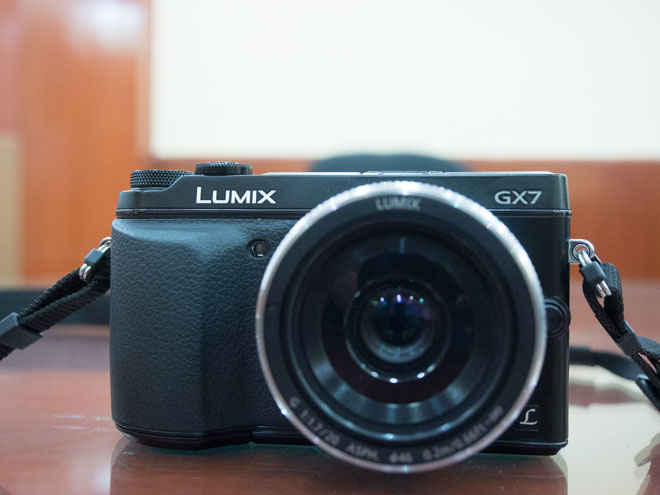
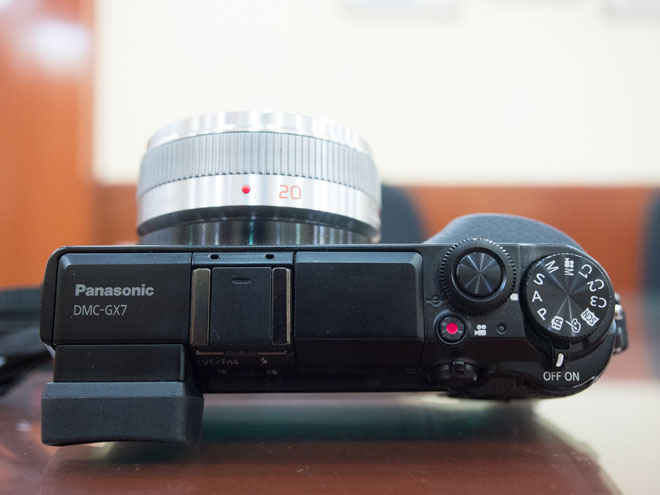
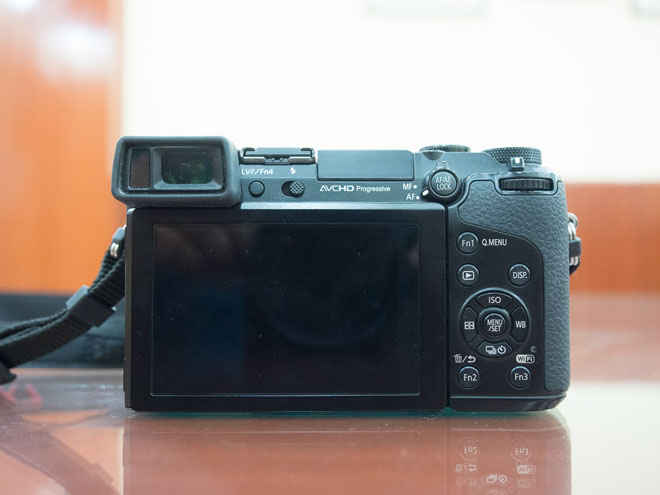
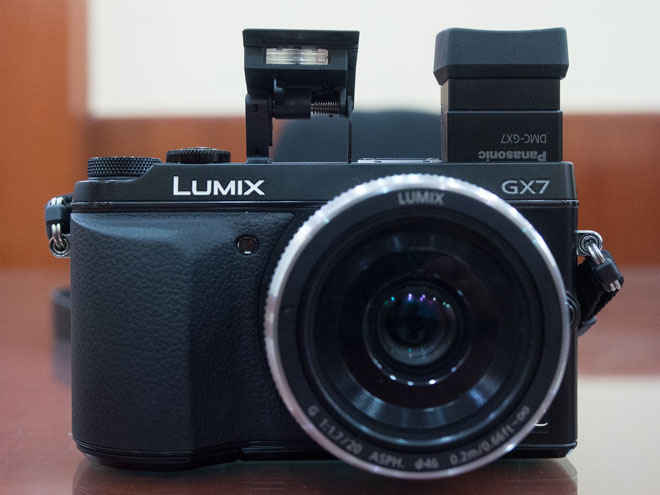
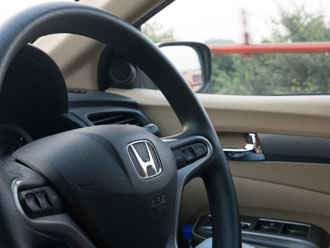
.jpg)
.jpg)

